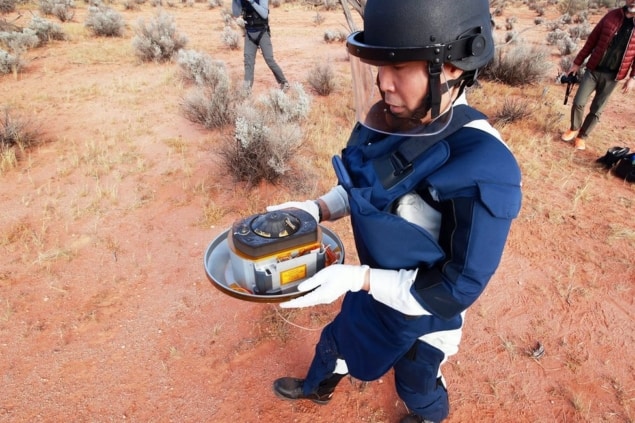
The Japanese space agency, JAXA, has successfully retrieved a 16 kg capsule that is hoped to contain flecks of an asteroid. The capsule landed in Australia’s remote outback following a six-year mission by the $250m Hayabusa 2 mission to retrieve samples from the asteroid Ryugu. Scientists will now study the contents of the capsule to find out about the origin of the asteroid’s organic matter and water and how these are related to life and ocean water on Earth.
Hayabusa 2 is a successor to Japan’s original Hayabusa craft, which returned with the first-ever samples from an asteroid back in 2010. Japan’s second asteroid sample-return mission was launched on 3 December 2014 from the Tanegashima Space Centre in Japan. It arrived in 2018 at Ryugu – an almost spherical carbon-rich asteroid that is 920 m in diameter and is thought to contain organic matter and hydrated minerals.
I hope this will shed light on how the solar system was formed and how water was brought to Earth
Hiroshi Yamakawa
The original Hayabusa mission managed only to scrape the surface of the asteroid Itokawa bringing back miniscule grains of rock. Hayabusa 2 instead released a 2 kg impactor months before touching down on the body, which it managed to do in November 2019.
The impactor hit the asteroid’s surface and make a small crater several metres in diameter allowing fresh material to be exposed. After collecting samples, Hayabusa 2 then headed home in November 2019, releasing the capsule from an altitude of about 200 km on 5 November 2020 when it returned to Earth via parachute.

The asteroid trillionaires
The capsule was located by officials and then flew by helicopter for analysis at the Woomera Test Range – a weapons testing facility in South Australia. JAXA noted that the sample container was properly sealed and the team also carried out preliminary gas-sampling but this was inconclusive. The capsule was then flown to Japan from Woomera Airport where it will be transported to a JAXA research facility for further analysis.
“I hope this will shed light on how the solar system was formed and how water was brought to Earth,” JAXA’s president Hiroshi Yamakawa told a news conference.



